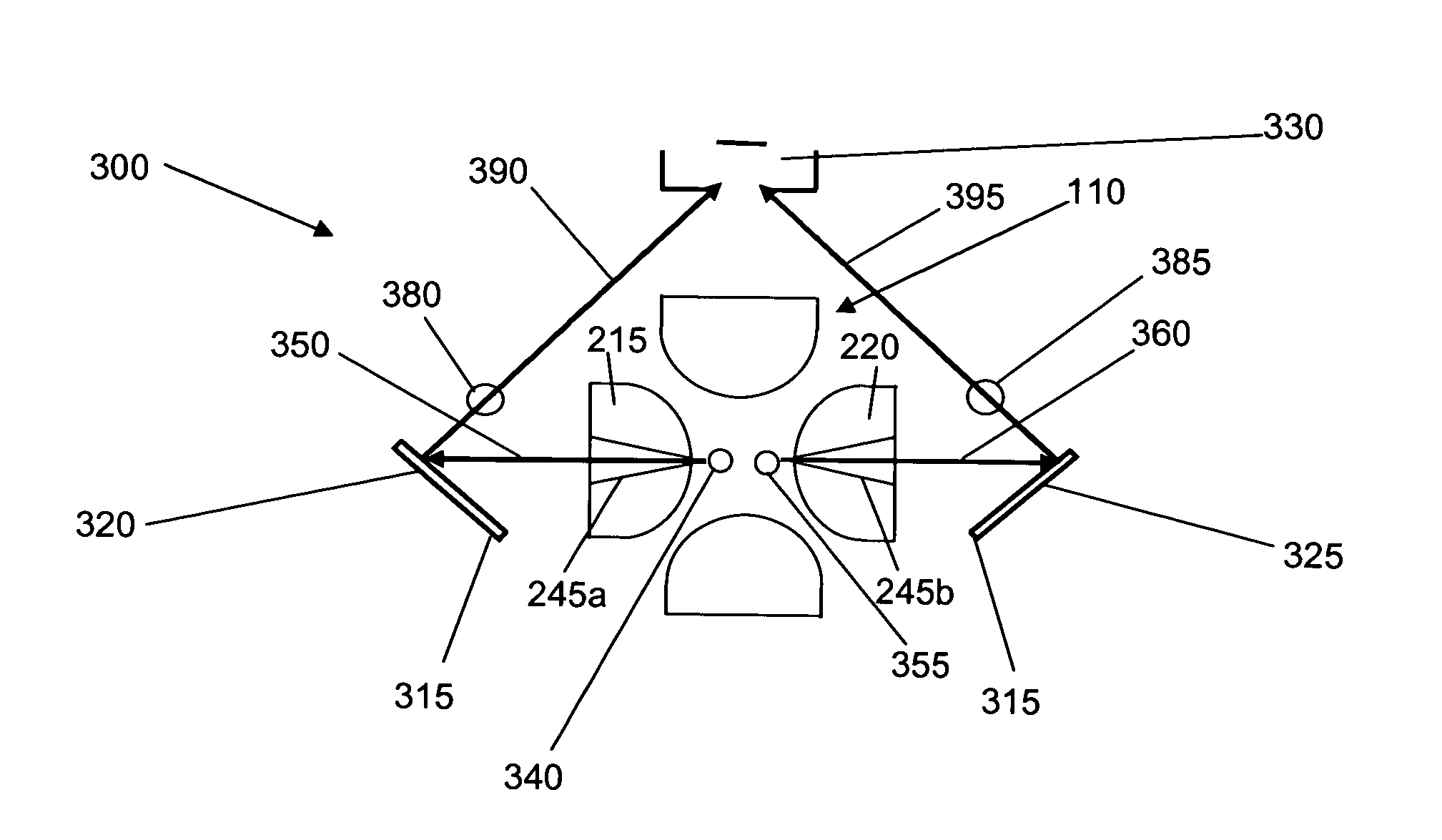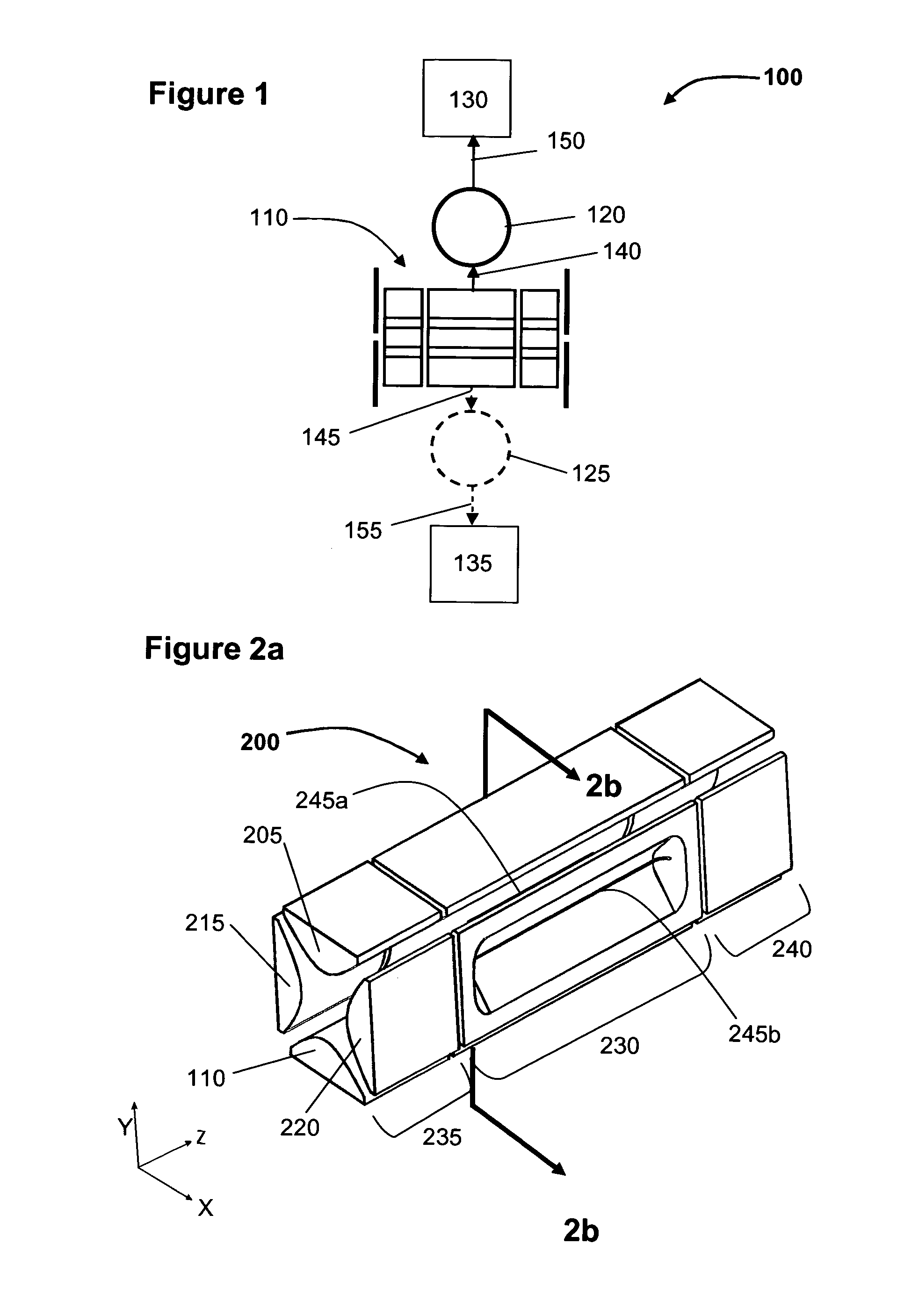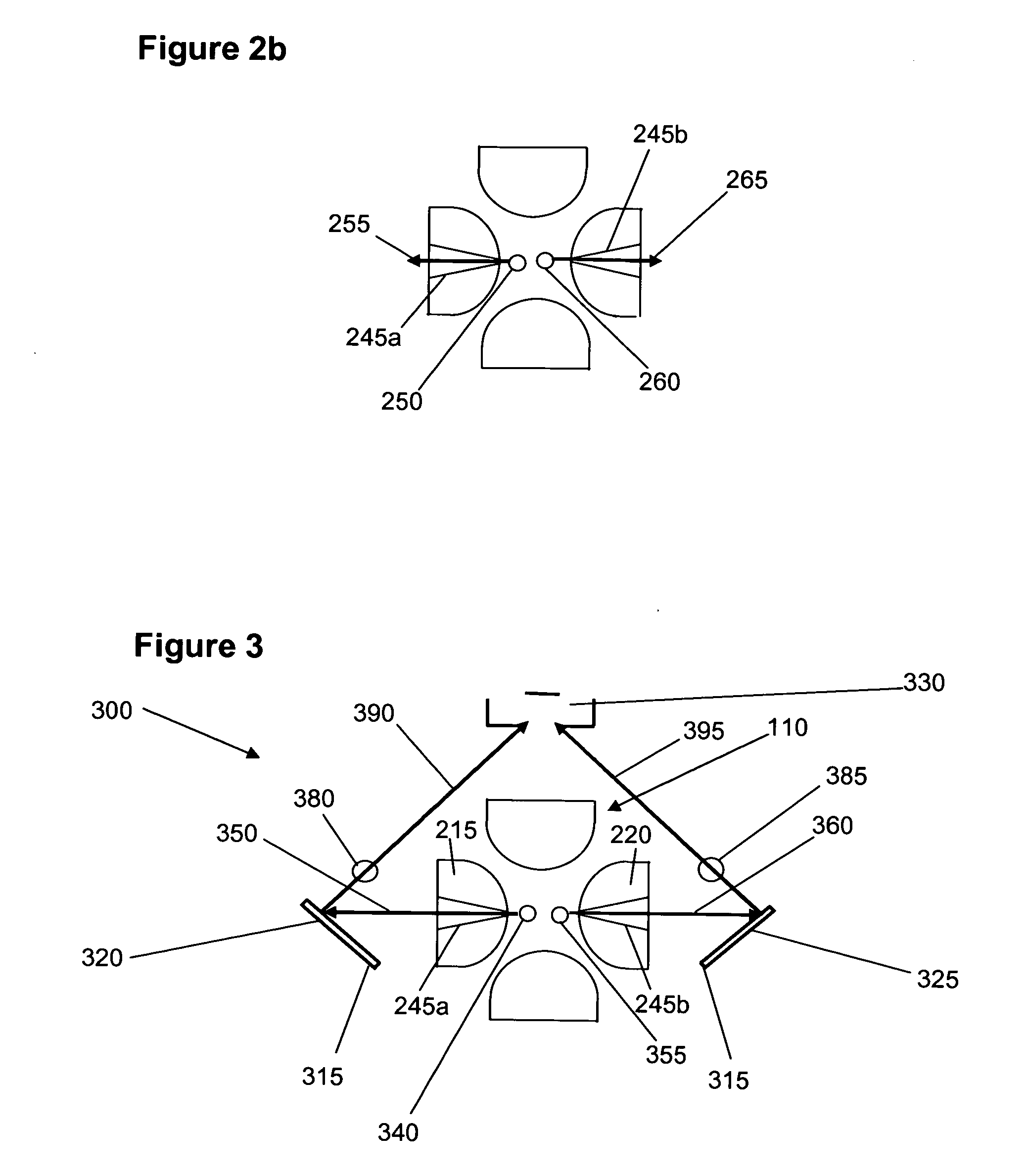Efficient detection for ion traps
a technology of ion traps and ion traps, which is applied in the field of resonance ejection scan, can solve the problems of significant increase in instrument complexity and manufacturing cost, adversely affecting sensitivity, and loss of about half of detectable ions, and achieve significant cost savings and efficient detection
- Summary
- Abstract
- Description
- Claims
- Application Information
AI Technical Summary
Benefits of technology
Problems solved by technology
Method used
Image
Examples
Embodiment Construction
[0017]FIG. 1 schematically illustrates a typical two-dimensional linear quadrupolar ion trap system 100 according to the prior art. The system 100 comprises a linear quadrupolar ion trap 110, a conversion dynode 120, and an associated detector 130. The combination of the conversion dynode 120 and the detector 130 enable a parameter indicative of the number of ions ejected from one side of the linear ion trap 110 to be measured. Also illustrated in dotted lines is an additional combination of second conversion dynode 125 and second detector 135, which enable ions ejected from the other side of the linear ion trap 110 to be detected. As illustrated, each detector 130, 135 typically comprises an electron multiplier and a detector circuit. In general, the conversion dynodes, electron multipliers and detector circuits are powered by their own discrete power supplies. A single detector circuit can be utilized to detect the charged particles emanating from the two electron multipliers, but...
PUM
 Login to View More
Login to View More Abstract
Description
Claims
Application Information
 Login to View More
Login to View More - R&D
- Intellectual Property
- Life Sciences
- Materials
- Tech Scout
- Unparalleled Data Quality
- Higher Quality Content
- 60% Fewer Hallucinations
Browse by: Latest US Patents, China's latest patents, Technical Efficacy Thesaurus, Application Domain, Technology Topic, Popular Technical Reports.
© 2025 PatSnap. All rights reserved.Legal|Privacy policy|Modern Slavery Act Transparency Statement|Sitemap|About US| Contact US: help@patsnap.com



